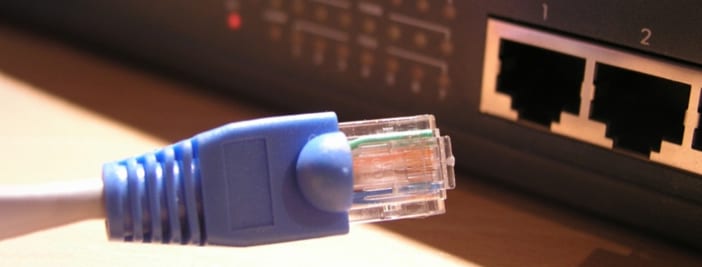(Or at least Be Glad that We Do)
[av_image src=’https://www.infinityinc.us/wp-content/uploads/WS-sq.jpg’ attachment=’7694′ attachment_size=’square’ align=’left’ styling=’circle’ hover=” link=” target=” caption=’yes’ font_size=’10’ appearance=’on-hover’ overlay_opacity=’0.6′ overlay_color=’#000000′ overlay_text_color=’#ffffff’ animation=’no-animation’ custom_class=” admin_preview_bg=” av_uid=’av-4bokvq’]
Jayson,
Field Technician
[/av_image]
Cable Management: it may seem like such a minor detail, but it is one of the most important aspects of a professional network closet. Set up properly, cabling can save your business time and money.
I have seen some scary closets and cabling, some which have been very daunting and overwhelming. Wires dangling everywhere, all the same color, nothing bundled, no room for a monitor so it’s left on the floor… How do you even begin to make sense out of something like that?
The truth is, it may be a pain to do right, especially in an existing closet. Sometimes the best way is to start over and redo it all. The extra time and effort will be worth it in the long run.
I recommend color coding your cables, using appropriate lengths, bundling them, and labeling them according to a set of standards. The time on the front end gets made up over and over again whenever you need to troubleshoot or make updates to anything in the closet.
Color Coding
To identify at a glance which cable you need, color coding is the way to go. And usually you will follow a scheme set by an industry or company standard. This standard should be documented and stored where it can be accessed and updated when needed. It keeps everyone on the same page, so that when I go on-site after someone else, or vice versa, we’re consistent.
Color coding also comes in handy when you have an end user or someone else who is assisting with troubleshooting. Imagine there’s a sudden loss of connection but no outage is being reported by your cable or Internet service provider. One thing you’ll want to do is check the switch to see if the cable got loose or disconnected. Sometimes this can be handled quickly over the phone, especially if you know the correct cable color someone on-site can look for.
Below is a sample color coding scheme. It’s not what we use, but it should give you an idea of what can work.
- RED — FROM service provider TO firewall
- GREEN — FROM firewall TO switch
- BLUE — FROM switch TO switch/access points
- ORANGE — FROM switch TO servers
- BLACK — is used for POE designation
- WHITE — used for end user devices (computers, printers, etc.)
Cable Lengths and Bundling
One of my biggest pet peeves in cable management is when the cables are a tangled mess. This happens when cables are too long and not bundled properly. It makes it very hard to trace, troubleshoot, and replace cables like in the image on the left. And this isn’t even one of the worst examples.
Why does cable length matter? You would not use a 15 foot patch cable to go 2 feet. The extra 13 feet create unnecessary clutter and an extra mess to bundle and try to manage. And the more mess and bundles you have, the harder it is to see any labels on the ports, switches, etc. Now you have to move things around before you can even see what you’re working on.
There are different ways to bundle cabling, and it usually comes down to personal preference. The way I like to bundle in network closets is in groups of 8 on the switch side (example: ports 1-8, 9-16, 17-24). That way, an 8 port switch is a single group. I will do the exact same on the patch panel side, if there is any slack in the patch cables. Ideally though, the patch cables are just long enough to go from patch panel to switch or wherever. No bundling needed.
Having cables neatly bundled and organized also helps to minimize safety concerns. You are less likely to trip over cables that are the correct length and/or bundled than if you were using longer cables that were not bundled. The same goes for end user areas, such as under desks. If the cables are neatly bundled together, they are less likely to catch on something under the desk and get ripped out or broken.
Proper cabling is not only safer and easier to use, it is aesthetically pleasing. I know I would rather see a neat bundle of cable, like in the photo on the right, then a jumbled mess of cables.
If your closet is hiding a nightmare of tangles and unlabeled cables, let us know. I’d be happy to help.
